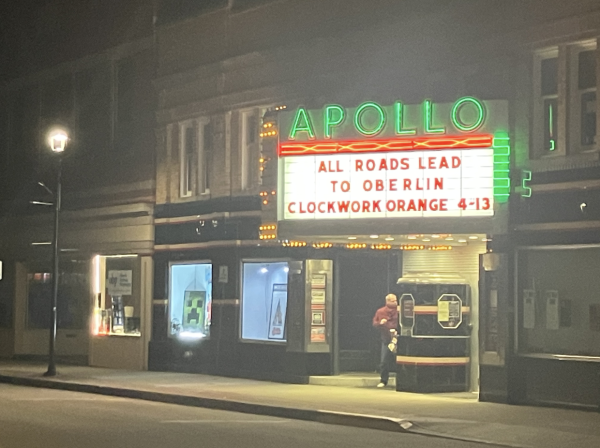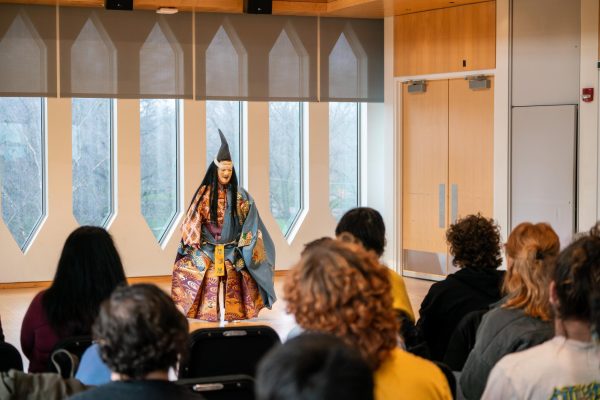Vikander Falls Short as Lara Croft in “Tomb Raider”
Editor’s Note: This review may contain spoilers for the Tomb Raider series.
After playing Lara Croft Tomb Raider: Anniversary and watching Lara Croft: Tomb Raider and Lara Croft Tomb Raider: The Cradle of Life, it’s safe to say that I’m a superfan of the gun-toting, knife-wielding, acrobatic badass Lara Croft. Tomb Raider, starring Alicia Vikander as Lara Croft and directed by Roar Uthaug, unfortunately reduced this iconic, legendary woman into a one-dimensional character, with a storyline several notches below even the amateur Adobe Flash games one can excavate online today.
While several versions of Lara Croft’s backstory exist, all franchises tell the story of an English woman who is trained to be an archaeologist and tomb raider by her father, Sir Richard Croft. She is of aristocratic lineage and in line to inherit a vast amount of wealth, including the famous estate of Croft Manor. Most game and movie storylines tell how Lara lost her father at a young age to mysterious circumstances, consequently sparking her interest in the occult. Lara begins her adventures searching for her father — or the reason that he is missing, presumed dead — and develops a lifelong obsession with finding and protecting the world from ancient, powerful, and deadly artifacts from around the globe. All avatars of Lara Croft feature the same long braid, combat boots, tiny shorts, and several guns strapped to her thighs.
Departing from established canon, Vikander’s Lara Croft is an athletic, inexperienced 21-year-old who rejects her family wealth and supports herself in East London. Although this reboot was supposed to be an origin story — prior to Angelina Jolie’s portrayal of Lara Croft as a charmingly cocky, self-assured badass — it was downright painful to watch the film’s lack of logical character development. In the first scene, we see Lara face an extremely humiliating defeat to another woman her age in a boxing ring, but she is later able to defeat huge, muscular men several times her size. In another scene, she participates in a bike race against a number of men, displaying her intellect by hitching a ride with a truck rather than pursuing any strategic maneuvers other than cheating. Despite this, Lara doesn’t even win the race and is instead run over by a police car, winding up in prison. After all of two demonstrations of independence and rebellion against her family inheritance, Richard Croft’s business partner Ana Miller (played by Kristin Scott Thomas) bails Lara out of prison and convinces her to accept her father’s estate and businesses.
Lara then gains access to her father’s hidden room, where she discovers his research obsession: a mythical Japanese queen, Himiko. According to legend, Himiko possessed powers over life and death. Lara’s father leaves her instructions to destroy his research, but being the rebel she is, she travels to Hong Kong looking for a ship to take her to the island Yamatai, where Himiko’s tomb is located. After some pointless running around and fight scenes, which involve her facing further defeat, Croft washes up on the island, shipwrecked, and is promptly captured by a group called Trinity. Trinity aims to unleash Himiko as a weapon on the world, and Lara must prevent this. However, her arrival provides them with the exact location of Himiko’s sarcophagus, as she brought all of her father’s research on the tomb with her.
During her time on the island, Lara finds her missing father. Together, Lara, her father, and the leader of Trinity, Mathias Vogel (played by Walton Goggins), take about half of the two-hour film to finally enter the tomb. Here, Lara once again displays her intellectual acumen, remembering that the colors blue and yellow together make green, “the color of life,” saving her and the rest of the archaeologists from death. With puzzles fit for Dora the Explorer episodes and obvious plot twists, Uthaug’s Tomb Raider could make viewers lose faith in humanity. Though I’m sure one can guess the ending, I won’t reveal it. Suffice to say, had Lara used her father’s wealth to hire a helicopter, there wouldn’t have been a movie.
The only silver lining in the entire movie is that Vikander reinterprets the sex symbolism of Lara Croft through her portrayal. While most video games and both previous movies featured Croft with abnormally large breasts, in clothes unfit for combat, Vikander promotes a healthier body image for the character in terms of desexualizing women. Furthermore, Vikander is extremely fit and has many opportunities to showcase her strength in the movie.
However, Vikander’s acting is subpar, speaking in monotone and wearing a constantly worried expression. When comparing Vikander’s reunion with her father to Jolie’s in Cradle of Life, there is a clear disconnect in acting chops. Vikander fails to create a single emotional moment in the film with her father, and it doesn’t help that her lines are extremely cheesy. The dialogue is poor, with lines like “I’m not that kind of Croft” repeated several times throughout the film, pushing the idea that Vikander just isn’t a convincing Lara Croft.







